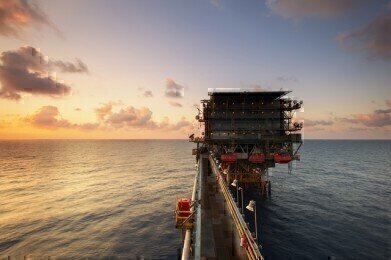Water/Wastewater
How Did an Offshore Oil Rig End Up on Land?
Sep 26 2017
Offshore oil platforms extract oil and gas from the sea. They can store the resources temporarily until they’re brought back to shore. As well as being heavy from the stored oil, anchors such as chain and wire rope hold the platforms in place. So with all this in mind, how exactly has an offshore oil rig made its way to the land on the coast of Scotland?
Different types of oil rig
With a variety of locations around the world, there is a need for several types of oil rig. The Petronius Platform (a compliant tower) in the Gulf of Mexico and Canada’s Hibernia platform (gravity-based structure) are two of the largest in the world. But in this case, the oil rig was located off the west coast of Scotland and was semi-submersible platform. This means there are four columns for buoyancy, which can be altered, as well as the potential for relocation. The relocation can be carried out either by carrying the whole platform on a ship, or – for smaller platforms – by using tugboats.
Blown ashore
It’s thought that the 17,000 tonne rig was involved in a harsh storm that caused it to disconnect from the tug boat. High winds off the coast of Scotland, around the Isle of Lewis, then blew the rig ashore before it reached the land at Dalmore.
"Overnight on Sunday, Stornoway Coastguard was in communication with the tug Alp Forward which encountered severe weather west of the Isle Of Lewis, Scotland during a towing operation.”, said a spokesperson for the Maritime and Coastguard Agency.
"At 4.20am on Monday, the master of Alp Forward reported that the tow line had parted and due to the severe weather conditions was unable to reconnect the tow line and the rig is at risk of grounding on the west side of the Isle Of Lewis near Carloway. The tug Alp Forward remains on scene to visually monitor the rig.”
Pollution risk
Despite the 280 tonnes of diesel on-board the platform, the coastguard has insisted the pollution risk is low. Removing oil from water is an important process for a range of purposes. In construction, dewatering sites must remove oil from their water before discharging it in order to meet discharge limits. ‘How to Deal with Oils When Treating Contaminated Construction Dewatering Water’ explores the different classifications of oil and how to go about removing them from water.
Events
May 05 2024 Seville, Spain
May 13 2024 Munich, Germany
May 23 2024 Beijing, China
May 23 2024 Beijing, China
Jun 10 2024 Algiers, Algeria













